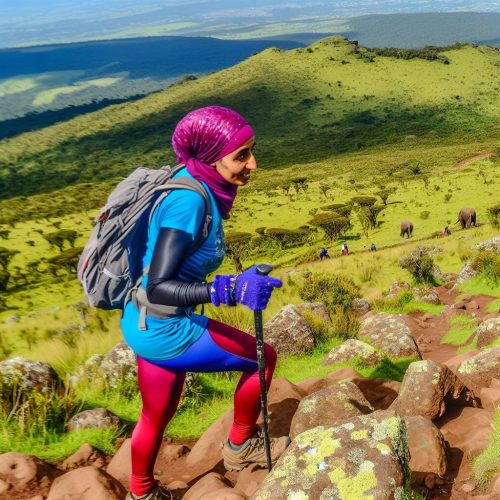Overview of Elephant Hill
Elephant Hill is a distinguishable landmark situated in the Aberdare Range, nestled in central Kenya. For trekking aficionados yearning to unearth the exceptional landscapes and diverse biological richness of the area, Elephant Hill presents a rigorous yet gratifying trek. Sitting within the bounds of the Aberdare National Park, the summit of Elephant Hill elevates to approximately 3,590 meters above sea level. This elevation makes it a sought-after destination for both nature enthusiasts and avid hikers. The park is a habitat teeming with varied flora and fauna, adding layers of interest to the trekking experience.
Access to the Trail
Commencing your journey to Elephant Hill, the trailhead can be found in proximity to the town of Njabini. To reach this location, travelers navigate through the North Kinangop Forest Station. This point of access is managed and supervised by the Kenya Wildlife Service (KWS), ensuring that both visitor safety and environmental preservation are priorities. For an optimal hiking experience, it is advisable to embark on the climb early in the morning. This approach not only maximizes the available daylight but also provides ample time for a successful ascent and descent of this iconic hill.
Preparation and Permits
Before stepping into the natural wonders of the Aberdare National Park, securing a permit from KWS is a necessary step. The administration’s regulation of visitor numbers plays a crucial role in safeguarding the fragile ecosystems within the park. Preparation is paramount when tackling the climb of Elephant Hill. Hikers are urged to assemble a kit comprised of appropriate hiking attire. This should include sturdy boots for secure footing, warm clothing to combat variable temperatures, and rainwear in anticipation of the park’s unpredictable weather patterns.
The Ascent and Terrain
Embarking on the climb up Elephant Hill typically spans 6-8 hours. This duration is contingent upon a hiker’s personal level of fitness as well as the prevailing weather conditions. The journey begins with an immersive trek through a dense bamboo forest. This initial stage of the trail requires diligence as it can become quite muddy and slippery, especially after rain. The importance of caution here cannot be understated. After departing from the wooded area, trekkers find themselves amid expansive open moorland. This region is adorned with hardy vegetation such as heathers, offering a stark and picturesque contrast to the dense forest.
As you approach the final segments of the climb, the path becomes dominated by rugged rocky outcrops. This phase may necessitate some scrambling, adding a layer of physical challenge to the hike. However, persistence is rewarded as reaching these heights unveils breathtaking panoramic views of the surrounding landscapes. For many hikers, the spectacular vistas serve as a significant highlight of the journey.
Flora and Fauna
The Aberdare Range is celebrated for its remarkable biodiversity. Along the trail, astute observers may spot a wide array of bird species as well as small mammals darting through the vegetation. At lower altitudes, larger wildlife, including elephants, buffalos, and even the critically endangered black rhinoceros, may grace hikers with their presence. It is of utmost importance for visitors to maintain a respectful distance from these majestic creatures and to honor the sanctity of their natural habitat.
The climb up Elephant Hill forms more than just a physical challenge; it offers an immersive experience into the extraordinary environments of the Aberdare National Park. Hikers are encouraged to move with care, adhering closely to conservation guidelines laid out by park authorities. In so doing, they contribute to the preservation of this unique natural setting, ensuring its splendor is available for future generations of explorers to enjoy and cherish.
